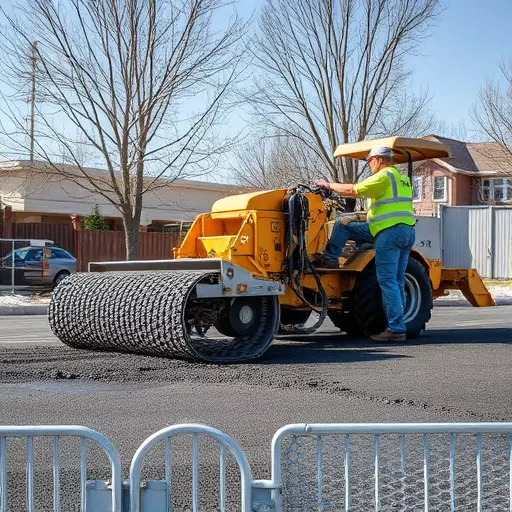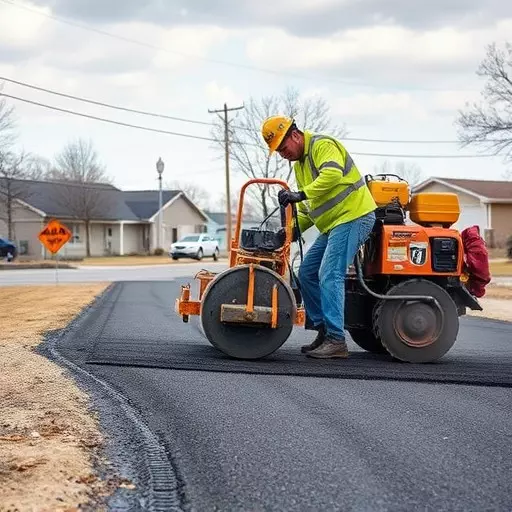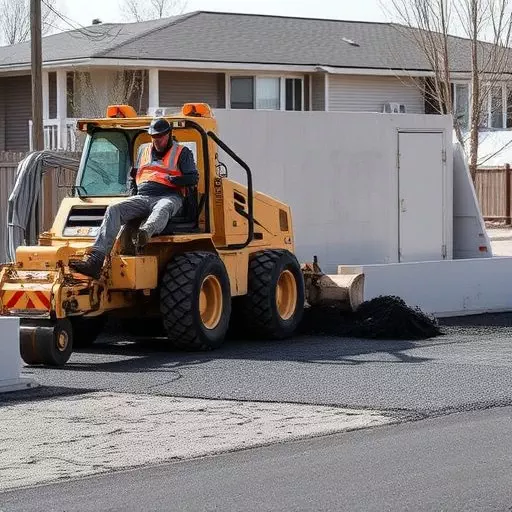Pavement milling, a specialized technique, is key in Toledo for efficient and cost-effective asphalt demolition. By removing top layers while preserving base layers, this method minimizes disruptions and reduces expenses. Skilled contractors assess structural integrity, consider factors like asphalt age and removal depth, and use historical data to guide safe and successful reconstruction or new pavement installations. Advanced techniques and adherence to safety standards ensure Toledo's infrastructure remains robust for future traffic and environmental demands.
After a thorough understanding of pavement milling—the initial step in asphalt demolition—and effective removal techniques, assessing structural integrity becomes paramount. This is especially crucial for cities like Toledo where an experienced asphalt demolition contractor plays a vital role in ensuring safe and compliant post-demolition site preparation. This article explores challenges, considerations, and long-term solutions for improved structural integrity, focusing on best practices for both contractors and those seeking to future-proof their infrastructure. Key topics include pavement milling, asphalt removal techniques, and safety protocols during structural assessments.
- Understanding Pavement Milling: The Initial Step in Asphalt Demolition
- Effective Asphalt Removal Techniques: A Contractor's Guide
- Assessing Structural Integrity: Challenges and Considerations Post-Demolition
- The Role of an Asphalt Demolition Contractor in Toledo
- Restoring the Foundation: Preparing the Site for Reconstruction
- Ensuring Safety and Compliance During Post-Demolition Structural Assessment
- Futureproofing Infrastructure: Long-Term Solutions for Improved Structural Integrity
Understanding Pavement Milling: The Initial Step in Asphalt Demolition
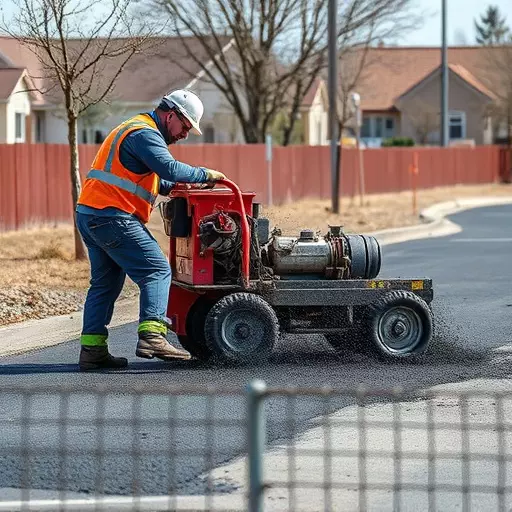
Pavement milling is a critical initial step in any asphalt demolition project. It involves using specialized equipment to remove the top layer of an existing asphalt surface, typically several inches deep, while preserving the base layers underneath. This technique is favored by asphalt demolition contractors in Toledo and beyond due to its ability to create a clean, level substrate for new pavement installations.
By removing only the damaged or worn-out portion of the asphalt, milling offers a cost-effective solution compared to complete removal and replacement. It also minimizes disruptions to traffic flow and surrounding infrastructure, making it an ideal choice for busy urban areas. Efficient pavement milling lays the groundwork for durable, long-lasting road repairs or new asphalt overlays.
Effective Asphalt Removal Techniques: A Contractor's Guide
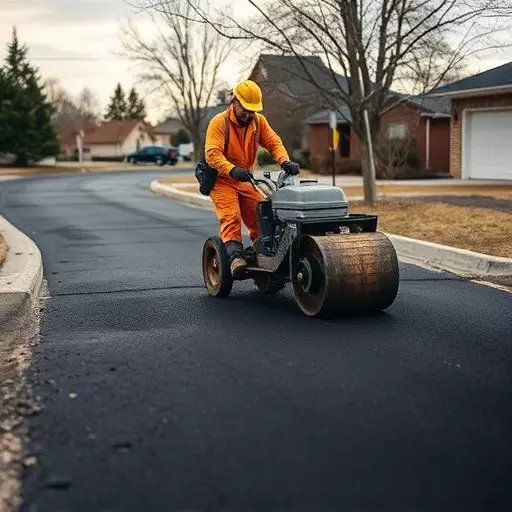
When it comes to ensuring structural integrity after asphalt demolition in Toledo, efficient asphalt removal is paramount for contractors. The process involves careful consideration of various techniques, each suited to different project needs and conditions. One widely adopted method is pavement milling, which utilizes specialized equipment to grind away the asphalt surface while minimizing damage to the underlying base materials. This technique is particularly beneficial for contracts aiming to preserve the existing subbase, reducing costly replacement costs.
Effective asphalt removal requires a comprehensive understanding of the material properties and the project objectives. Contractors in Toledo should weigh factors such as the age and condition of the asphalt, the depth of removal needed, and environmental considerations. By adhering to best practices and employing suitable asphalt removal techniques, contractors can ensure that the structural integrity of the site is maintained, paving the way for successful reconstruction or new pavement installations.
Assessing Structural Integrity: Challenges and Considerations Post-Demolition
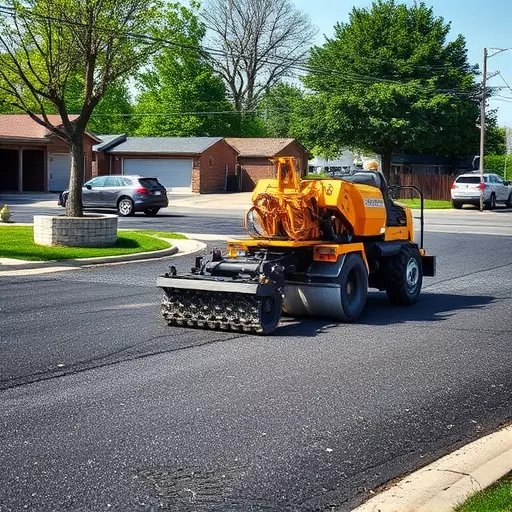
After a successful asphalt demolition project, assessing the structural integrity of the underlying surface becomes paramount for any skilled asphalt demolition contractor in Toledo. While visually inspecting the area might seem like a straightforward task, it’s not without its challenges. The process requires meticulous planning and specialized knowledge to ensure no structural damage has been overlooked. This is particularly crucial when deciding on the appropriate asphalt removal techniques or pavement milling depth to employ.
One of the primary considerations is understanding how various factors, such as age and condition of the existing structure, environmental conditions during demolition, and the specific asphalt removal methods used, can impact the overall stability. For instance, older structures may have weakened foundations that could require additional reinforcement post-asphalt removal. As part of their assessment, contractors should also consider any historical data or reports on prior construction or alterations to accurately gauge potential risks.
The Role of an Asphalt Demolition Contractor in Toledo

When it comes to preserving structural integrity after asphalt demolition in Toledo, an experienced and reputable asphalt demolition contractor plays a pivotal role. These professionals are equipped with the expertise and tools needed to safely and efficiently remove old or damaged asphalt surfaces while minimizing disruption to the surrounding area. In a city like Toledo, where traffic flow and pedestrian safety are paramount, their work is crucial in preparing infrastructure for renovation or new construction projects.
An asphalt demolition contractor in Toledo typically employs various asphalt removal techniques, with pavement milling being one of the most common. This process involves using specialized equipment to grind up the asphalt surface, allowing for easy removal and recycling of the material. By employing such advanced methods, contractors can ensure that the structural base is left intact, providing a solid foundation for future paving projects.
Restoring the Foundation: Preparing the Site for Reconstruction

After a successful asphalt demolition project, restoring the foundation and preparing the site for reconstruction is crucial. The first step involves assessing the current state of the structure to identify any damage or instability. An experienced asphalt demolition contractor in Toledo will employ advanced techniques like pavement milling to safely remove remaining asphalt and debris while minimizing disruption to the underlying surface.
This meticulous preparation ensures a solid base for new construction. It includes clearing the site, grading the land, and stabilizing the soil if necessary. By following proper asphalt removal techniques, the contractor can create a level and compacted surface, ready for laying fresh asphalt or constructing alternative pavement systems. This careful restoration is key to maintaining structural integrity and setting the stage for a durable and safe reconstruction project.
Ensuring Safety and Compliance During Post-Demolition Structural Assessment
When conducting post-asphalt demolition structural assessments, prioritizing safety and compliance is paramount. It’s crucial to engage a qualified asphalt removal contractor in Toledo who employs safe working practices and adheres to industry standards. This involves utilizing appropriate personal protective equipment (PPE), implementing traffic control measures during site access, and ensuring proper disposal of removed materials according to environmental regulations.
Effective communication between the demolition team, engineers, and stakeholders is essential to ensure compliance with building codes and safety norms. The use of advanced asphalt removal techniques, such as pavement milling, allows for precise structural assessments by minimizing damage to underlying components during the removal process. This meticulous approach ensures that any potential hazards are identified and addressed before reconstruction or rehabilitation work commences.
Futureproofing Infrastructure: Long-Term Solutions for Improved Structural Integrity
As an asphalt demolition contractor in Toledo, understanding long-term structural integrity is key. Futureproofing infrastructure involves adopting innovative solutions that extend the lifespan of surfaces beyond simple replacement. Efficient pavement milling, a sophisticated asphalt removal technique, offers precise and controlled excavation, preserving underlying structures while facilitating efficient recycling and repurposing of removed materials.
This sustainable approach reduces environmental impact and minimizes costs for both contractors and municipalities. By integrating advanced materials and construction methods, future-ready infrastructure can withstand the rigors of modern traffic patterns, climate change, and technological advancements. As Toledo’s urban landscape evolves, these long-term solutions ensure that structural integrity remains robust, promoting safer and more efficient transportation networks for years to come.
